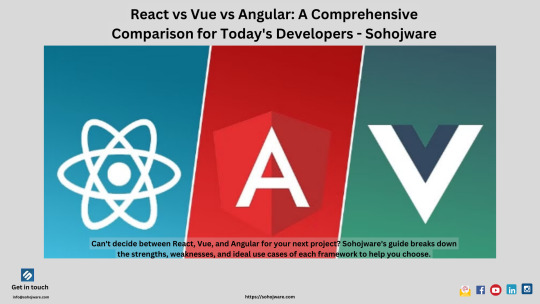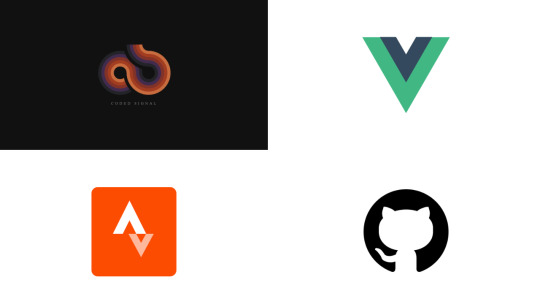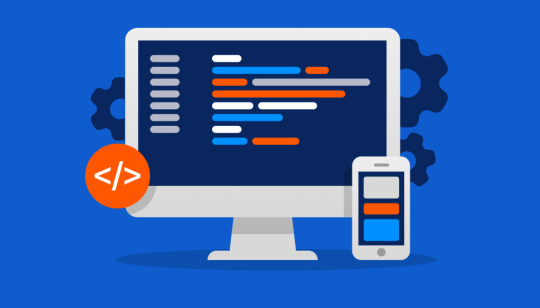#vue js dynamic css
Explore tagged Tumblr posts
Text
JavaScript
Introduction to JavaScript Basics
JavaScript (JS) is one of the core technologies of the web, alongside HTML and CSS. It is a powerful, lightweight, and versatile scripting language that allows developers to create interactive and dynamic content on web pages. Whether you're a beginner or someone brushing up on their knowledge, understanding the basics of JavaScript is essential for modern web development.
What is JavaScript?
JavaScript is a client-side scripting language, meaning it is primarily executed in the user's web browser without needing a server. It's also used as a server-side language through platforms like Node.js. JavaScript enables developers to implement complex features such as real-time updates, interactive forms, and animations.
Key Features of JavaScript
Interactivity: JavaScript adds life to web pages by enabling interactivity, such as buttons, forms, and animations.
Versatility: It works on almost every platform and is compatible with most modern browsers.
Asynchronous Programming: JavaScript handles tasks like fetching data from servers without reloading a web page.
Extensive Libraries and Frameworks: Frameworks like React, Angular, and Vue make it even more powerful.
JavaScript Basics You Should Know
1. Variables
Variables store data that can be used and manipulated later. In JavaScript, there are three ways to declare variables:
var (old way, avoid using in modern JS)
let (block-scoped variable)
const (constant variable that cannot be reassigned)
Example:
javascript
Copy code
let name = "John"; // can be reassigned const age = 25; // cannot be reassigned
2. Data Types
JavaScript supports several data types:
String: Text data (e.g., "Hello, World!")
Number: Numeric values (e.g., 123, 3.14)
Boolean: True or false values (true, false)
Object: Complex data (e.g., { key: "value" })
Array: List of items (e.g., [1, 2, 3])
Undefined: A variable declared but not assigned a value
Null: Intentional absence of value
Example:
javascript
Copy code
let isLoggedIn = true; // Boolean let items = ["Apple", "Banana", "Cherry"]; // Array
3. Functions
Functions are reusable blocks of code that perform a task.
Example:
javascript
Copy code
function greet(name) { return `Hello, ${name}!`; } console.log(greet("Alice")); // Output: Hello, Alice!
4. Control Structures
JavaScript supports conditions and loops to control program flow:
If-Else Statements:
javascript
Copy code
if (age > 18) { console.log("You are an adult."); } else { console.log("You are a minor."); }
Loops:
javascript
Copy code
for (let i = 0; i < 5; i++) { console.log(i); }
5. DOM Manipulation
JavaScript can interact with and modify the Document Object Model (DOM), which represents the structure of a web page.
Example:
javascript
Copy code
document.getElementById("btn").addEventListener("click", () => { alert("Button clicked!"); });
Visit 1
mysite
Conclusion
JavaScript is an essential skill for web developers. By mastering its basics, you can create dynamic and interactive websites that provide an excellent user experience. As you progress, you can explore advanced concepts like asynchronous programming, object-oriented design, and popular JavaScript frameworks. Keep practicing, and you'll unlock the true power of JavaScript!
2 notes
·
View notes
Text
Why I Love Get By Text
I have a confession: I've been writing browser tests lately, and my preferred approach to locators is becoming get by text or get by label.
I am aware that some of you might want to throw some full wine bottles at me now. But I stand by it.
Over the course of my career as a test automation specialist, I've worked with a bunch of web applications for which I automated browser tests. One of the most critical aspects of writing browser tests is finding good locators to hook into in order to drive the application. Naturally, since there are plenty of options there are also plenty of opinions on what kind of locator strategies to use. Typically these follow some kind pattern like this;
Use id attributes that are permanent, if you can. If you can't, then
Use data-testid or other custom attributes specifically for automation if you can. If this isn't an option then
Use class attributes, which tend to be stable. If you can't do this, then
Use CSS properties to specify elements. And if all the above aren't options, then
Use text or xpath locators or something and hope for the best.
Generally patterns like this are a good heuristic for identifying locators. However, the nature of front-end web applications has gradually changed over the past decade. Most front-ends are now generated through frameworks and not through hand-written HTML, CSS and JS. A result of such frameworks is that elements aren't always able to be directly manipulated by developers, and you need to rely on the capabilities of the framework. Browsers (and computers more generally) have gotten faster and more efficient. And lastly, tooling has evolved greatly for browser automation. Selenium WebDriver is a web standard now, and there's lots of other tools that can be used.
Based on all this progress, one would imagine that there's been progress on how to choose or use locators well with modern and maybe less-modern web apps and pages. One would be, I think, disappointed to find out there hasn't been much progress here. Finding and maintaining locators is pretty similar to how things looked many years ago. Front-end developers still hesitate to add custom attributes for testing sometimes. Newer web frameworks dynamically create elements, so id attributes are either not present or not reliable enough for automation. No one understands CSS, still.
What to do based on this state of affairs? I've been using Playwright lately for browser automation, and Playwright provides a getByText() method for finding elements. I started using it out of convenience at first and, well, I'm convinced it's a good approach. Why? Because - frankly - it works well.
The thing about text in web applications, whether that be labels next to inputs or placeholder text, is that it's actually fairly stable. Most buttons with the text Submit will continue to have the text Submit for a long time. And if the text does change on an element it is straightforward and obvious to update your tests. Plus, text doesn't tend to go away: moving from Angular to React to Vue to Svelte still means your Name field has a label of "Name" that end users will see.
One big objection to using text is localization internationalization, which can be a valid point. However, if your web app has five options for language, does that mean the logic and workflows change as well? They might, but if they don't, you can likely test one language and still feel confident in the test results. If you can't use text-based locators, then you'll have to evalutate your strategy anyway.
I am a big fan of the adage "What's the simplest thing that could possibly work". When it comes to finding elements by text, this advice seems to hold true.
0 notes
Text
The ways to develop a website

You can approach various ways to developer website but depending on your goals, technical skill, and also resources. Below is an overview of the primary methods to develop a website:
1. Using website builders
Website builders are allow you to create website without calling knowledge and it is user friendly platform also. They offer pre designed templates and drag and drop interfaces.
• Popular tools: wordpress. com, shopify for eCommerce, wix, squarespace etc.
• How it works:
° You can choose the template that you want.
° Customize the design, layout and also content with using visual editor of the platform.
° You can also add forms, eCommerce, or blogs to plugins or also in built tools.
° Then publish the site with hosting that provided by the platform.
• Pros:
° No coding required and it is beginner friendly.
° Fast setup and development.
° Hosting, security and also updates are included.
• Cons:
°Compared to coding it have limited customisation.
° Monthly subscription costs.
° Migrating can be challenging because of platform dependency.
2. Content management system(CMS)
It require minimal coding and it allows you to manage website content efficiently with the customizable themes and plugins.
• Popular tools: wordpress. org, Joomla, drupal
• How it works:
° Install the CMS on a web server.
° With the basic coding or in built tool, you can select a theme and customize.
° To add functionality you can use plugins.
° Then you can manage content through dashboard.
• Pros:
° It is flexible and scalable and also it have thousands of themes and plugins.
° Provide community support and resources.
° It is useful for portfolios or blogs and also Complex sites.
• Cons:
° You should require some technical knowledge for the set up and maintenance.
° It have hosting and domain cost.
° It need security updates as also backups.
3. Coding from scratch (custom development)
Build a website with the raw code, it can give you complete control over design and functionality.
• Technologies:
° Frontend: HTML, CSS, JavaScript.
° Backend: python, PHP, Ruby, and node. JS
° Database: MySQL, mongoDB,postgreSQL.
° Tools: code editor, hosting, version control.
• How it works:
° You can design the site structure and visuals by using HTML/ CSS/ or JavaScript.
° For dynamic features build back end logic.
° You can connect to a database for data storage.
• Pros:
° Offers full customisation and flexibility.
° Unique functionality and also optimized performance.
° No platform restrictions.
• Cons:
° It requires coding expertise.
° Costly and also time intensive.
° Require ongoing maintenance such as security, updates.
4. Static site generator
It can create fast, and also secure website by pre rendering HTML files. It is useful for Blogs, or portfolios.
• Popular tools: Hugo, Jekyll, Next. js.
• How it works:
° You can write content in markdown or also similar format.
° Use template to generate static HTML, CSS, or JavaScript files.
° Use hosting platform like netlify,or vercel.
• Pros:
° It is fast and Secure and no server side processing.
° It provide free or low cost hosting.
° Easy to scale.
• Cons:
° It has Limited functionality.
° It required some technical knowledge.
5. Headless CMS with frontend frameworks
A headless CMS can provide a backend for content management with the conctent frontend for flexibility.
• Popular tools:
° Headless CMS: Strapy, contentful etc.
° Frontend framework: React, Vue. js etc
• How it works:
° To manage content via APIs, use headless CMS.
° With JavaScript framework built a custom frontend.
° To display the dynamic content connect both via APIs.
• Pros:
° Very much flexible and scalable.
° Allowing reuse across platforms such as web, mobile.
° Modern and also performant.
• Cons:
° It require coding skill and also familiarity with APIs.
° The setup can be complex.
6. Hiring a developer or agency
If you don't have time or lack of Technical skill, you can you can hire developer or agency.
• How it work:
° For custom development you can higher freelancers or agencies.
° They can provide your requirement such as design , features, and budget.
° In collaborate on design and functionality then launch the website.
• Pros:
° They provide professional result with your needs.
° Save time.
• Cons:
° Cost can be higher.
° Depend on third parties for maintenance.
7. Low code platforms
Low code platforms fill the gap between no code Builders and custom coding. And they offering visual development with the coding flexibility.
• Popular tools: bubble, Adalo, Outsystems.
• How it works:
° To design and configure the site, use Visual interface.
° And some custom code for specific features.
° Use built in or external hosting.
• Pros:
° It is faster than coding from scratch.
° You can offer more customizable than website Builders.
• Cons:
° Learning curve for advanced features.
° Require subscription or hosting cost.
Choosing the right method
• Beginners: if you are a beginner you can start the with the website Builders or wordpress.
• Budget conscious: if you are conscious about your budget you can use static site generators or also free CMS options.
• Developers: opt for custom coding or headless CMS for whole control.
• Businesses: for businesses, it is good to consider hiring professionals or using scalable CMS platform.
If you are looking for a website development with design, it is smart to work with an experienced agency. HollyMinds Technologies is a great choice, because they are the best website development company in Pune, and they make websites that are perfectly coded and structured to stand the test of time. The algorithms are set to bring visitors from across the globe. A structured website with right content, can bring more visitors to your business.
1 note
·
View note
Text
The Future of Front-End Development: Technologies, Trends, and Services in 2025
Front-end development plays a crucial role in how users interact with websites and applications. The user experience (UX), speed, and responsiveness of a website all depend on how well the front end is developed. As technology evolves, businesses need to stay ahead by adopting modern front end development technologies and ensuring seamless experiences across devices.
With growing competition in the digital space, companies are also investing in front end development services to create high-performing, visually appealing, and user-friendly applications. This article explores the latest technologies, trends, and services shaping the future of front-end development.
1. What is Front-End Development?
Front-end development focuses on the visual and interactive aspects of a website or web application. It includes everything a user sees and interacts with, such as navigation menus, buttons, animations, and layout structures.
Key Responsibilities of Front-End Developers:
Writing clean, efficient, and responsive code.
Ensuring seamless cross-browser compatibility.
Optimizing websites for faster load times and better performance.
Creating accessible and user-friendly interfaces.
Integrating with backend APIs for smooth data retrieval.
To build fast and engaging user interfaces, developers rely on modern front end development technologies that simplify coding, enhance performance, and improve scalability.
2. Latest Front-End Development Technologies in 2025
With new frameworks, libraries, and tools emerging, front-end development is continuously evolving. Here are some of the best technologies shaping the front end in 2025.
A) Front-End Programming Languages
1. JavaScript (JS)
JavaScript remains the dominant language for front-end development, powering interactive and dynamic web applications. With the rise of frameworks like React, Vue, and Angular, JavaScript continues to be at the core of modern web development.
2. TypeScript
TypeScript, a strongly-typed superset of JavaScript, is becoming increasingly popular due to its ability to reduce errors and improve code maintainability. More developers are adopting TypeScript for large-scale applications.
3. WebAssembly (WASM)
WebAssembly allows developers to run high-performance applications in web browsers using languages like C++ and Rust. It is revolutionizing front-end development by enabling faster execution of complex applications.
B) Best Front-End Frameworks and Libraries
4. React.js
Developed by Meta, React remains one of the most widely used front-end libraries. Its component-based architecture, virtual DOM, and support for server-side rendering (SSR) make it ideal for building fast and scalable web applications.
5. Vue.js
Vue is a lightweight yet powerful framework known for its ease of use and flexibility. With Vue 4 expected to launch soon, its improvements in performance and modularity make it a great choice for progressive web applications (PWAs).
6. Angular
Maintained by Google, Angular is a feature-rich front-end framework best suited for enterprise-grade applications. It offers built-in solutions for routing, form validation, and dependency injection, making it ideal for complex projects.
7. Svelte
Svelte is gaining popularity due to its lightweight approach — it compiles components at build time, eliminating the need for a virtual DOM and resulting in faster execution and reduced file sizes.
C) UI/UX and Styling Technologies
8. Tailwind CSS
Tailwind CSS is a utility-first CSS framework that simplifies custom styling. It allows developers to build beautiful interfaces without writing large CSS files, making it a preferred choice for modern UI development.
9. Material UI (MUI)
Based on Google’s Material Design, MUI provides a collection of pre-built, customizable components that improve the speed and consistency of UI development.
10. CSS Grid and Flexbox
These layout techniques offer powerful tools for designing responsive web pages, allowing developers to create dynamic and adaptive designs with minimal effort.
3. Front-End Development Services: What Businesses Need
Building a successful digital product requires more than just coding. Companies offering front end development services help businesses create user-friendly interfaces, optimize performance, and ensure compatibility across devices. The services are explained in detail below -
UI/UX Design and Development
A well-structured user interface (UI) and user experience (UX) ensure smooth navigation and engagement. Front-end developers work closely with designers to implement:
Intuitive layouts for easy navigation.
Accessibility improvements for all users.
Mobile-first designs for seamless performance across devices.
Progressive Web App (PWA) Development
PWAs provide an app-like experience on web browsers. They load faster, work offline, and improve engagement. Businesses investing in PWA development benefit from:
Better mobile performance without requiring an app download.
Improved search engine visibility.
Increased user retention due to smooth interactivity.
Single Page Application (SPA) Development
SPAs dynamically update content without reloading the page, making them faster and more responsive. React, Vue, and Angular are commonly used for building SPAs.
Cross-Browser and Device Compatibility Testing
Ensuring a website functions smoothly across all browsers and devices is crucial. Developers optimize front-end code to prevent issues related to:
Browser inconsistencies (Chrome, Firefox, Safari, Edge).
Mobile responsiveness across various screen sizes.
Performance Optimization
A slow-loading website leads to poor user experience and lower rankings on search engines. Front-end developers focus on:
Reducing page load times by optimizing images and scripts.
Implementing lazy loading for improved speed.
Minimizing HTTP requests and using content delivery networks (CDNs).
4. Future Trends in Front-End Development
With technology advancing rapidly, front-end development is embracing new innovations. Here are some trends shaping the future:
Artificial Intelligence (AI) in UI/UX
AI is being integrated into front-end development for personalized user experiences, automated testing, and smart UI components.
Voice-Activated Interfaces
More websites are incorporating voice navigation, allowing users to interact hands-free.
Augmented Reality (AR) and Virtual Reality (VR)
AR/VR-based front-end development is growing in e-commerce, real estate, and education, offering immersive experiences.
No-Code and Low-Code Development
Platforms like Webflow and Bubble enable faster front-end development without extensive coding knowledge.
Front-end development is evolving rapidly, with new technologies and services transforming how businesses build digital experiences. Choosing the right front end development technologies ensures websites and applications remain fast, responsive, and engaging.
Businesses investing in front end development services gain access to expert developers, optimized UI/UX design, and scalable digital solutions that improve customer satisfaction. As we move into 2025, staying ahead with the latest tools, frameworks, and trends will be key to creating successful web applications. Whether you’re a startup or an enterprise, prioritizing front-end development will set your business apart in an increasingly digital world.
0 notes
Text
Crown Hill IT Solutions: Best 6 Weeks Industrial Training in Front-End Development
Both individuals and businesses depend significantly on web applications and websites to establish their presence in the rapidly changing digital world. Thus, the demand for skilled front-end developers has grown exponentially. One of the leading IT firms, Crown Hill IT Solutions, offers a comprehensive six-week industry training course in front-end development to cater to this growing demand.
Creating visually appealing and engaging components of a website or online application that end users may utilize directly is the primary objective of front-end development. Front-end development relies on foundational technologies like JavaScript for interactivity, CSS for style, and HTML for structure. libraries and frameworks like Vue, Angular, and React. These days, JS is also utilized in front-end programming to produce dynamic, responsive, and effective user interfaces.
Why Choose Crown Hill IT Solutions for Front-End Development Training?
Crown Hill IT Solutions is a well-established IT training and development company renowned for its expertise in delivering superior industrial training programs. Our 6 Weeks Industrial Training in front-end development is thoughtfully created to give professionals and students practical experience, enabling them to create dynamic and interactive websites.
Key Features of Our Industrial Training Program:
✅ Curriculum Relevant to Industry: Students will stay ahead of the curve in the field thanks to the training's coverage of the newest front-end development frameworks and technologies.
✅ Exposure to Real-World Applications: The curriculum places an extreme value on practical projects that assist students in applying what they have learned.
✅ Skilled Instructors: Our instructors have years of web development experience and are highly talented professionals.
✅ Live Projects: Participants can experience real-world challenges by working on realistic projects.
✅ Certification: Students who successfully finish the course are awarded a certification accepted by the industry, enhancing their resumes.
Best Front-End Development IT Industrial Training
Developing a website's interactive and visual elements is the responsibility of front-end development, a crucial aspect of web development. We at Crown Hill IT Solutions are dedicated to providing practical instruction and highly sought-after technological know-how. The following essential front-end technologies are covered in our training program:
✔ HTML5 & CSS3: Web page structure and styling.
✔ JavaScript & jQuery: Adding interactivity and dynamic effects to websites.
✔ Bootstrap & Tailwind CSS: Responsive and mobile-first designs.
✔ React.js & Angular: Developing modern single-page applications (SPAs).
✔ Version Control (Git & GitHub): Mastering collaborative development and version management.
✔ Web Performance Optimization: Optimizing website speed and user experience.
✔ Cross-Browser Compatibility & Testing: Achieving smooth working across various browsers and devices.
Why Industrial Training is Important?
Industrial training is an essential part of the process of getting students ready for real-life challenges in the real world. It helps to:
Close the gap between industry requirements and theoretical learning.
Gain hands-on experience on real-time projects.
Improving problem-solving and critical thinking skills.

Start Your Journey with Crown Hill IT Solutions Today!
If you are interested in web development and wish to establish a fulfilling career in front-end development, then Crown Hill IT Solutions is the ideal destination for you. Avail our Best Front-end development IT Industrial Training courses to acquire the skills necessary to succeed in the IT sector.
Register today and kick-start your journey to becoming a skilled front-end developer.
For more details, call us at:
📧 E-mail: [email protected]
📞 Call: +91-9569669666
#6 Weeks Industrial Training in front-end development#Best Front end development IT Industrial Training#Full Stack Front end development IT Industrial Training
0 notes
Text
tech veracity training located in kakinada provided Tech Veracity Premier Web Development Training & Services in Kakinada
Located in Kakinada, Tech Veracity is a leading provider of web development training and services, offering the best learning opportunities to aspiring developers and businesses looking to enhance their digital presence. With a focus on quality education, hands-on training and modern industry practices, Tech Veracity has established itself as a cornerstone in the field of technology training in the region.
Comprehensive Web Development Training
At Tech Veracity, Web Development training is designed to equip students with the knowledge and skills to create powerful and responsive websites and web applications. Whether you are a beginner or an experienced developer looking to improve your skills, Tech Veracity offers customized training programs that meet the needs of diverse learners.
The training covers a wide range of essential web development topics, including:
Front-end development:: Web development services Students learn to create attractive and interactive websites using HTML, CSS, JavaScript, and popular front-end frameworks such as React, Angular, and Vue. .js. The training includes hands-on exercises that help students develop a deep understanding of the principles of user interface (UI) and user experience (UX) design.
Latest Developments: Tech Veracity offers in-depth training on the latest technologies, such as Node.js, Python, PHP, and Ruby. Students learn to manage server-side logic, databases, and APIs, allowing them to create dynamic, data-driven web applications.
Full-Stack Development: Combining front-end and back-end knowledge, the full-stack development course allows students to become proficient in developing end-to-end web applications. The program includes learning databases (MySQL, MongoDB), version control with Git, and deployment
#Web development services#Best Web development services#app development services#app development courses near me#app development company#app development company near me#best app development companies
0 notes
Text
Website And App Developer work from home job/internship at Prashant Kumar LTD
About the work from home job/internshipAre you a tech-savvy and innovative developer looking to kickstart your career in a dynamic environment? Look no further! Prashant Kumar LTD is seeking a Website and App Developer intern with a strong knowledge of HTML&CSS, JavaScript, ReactJS, Vue Js, Django, Git, Flutter, Swift, and Ruby on Rails to join our team.Selected intern’s day-to-day…
0 notes
Text
Top Software Certifications By Edchart
At Edchart, we pride ourselves on offering a diverse range of online software certifications tailored to meet the needs of professionals in the ever-evolving tech industry. Whether you are looking to enhance your skills or pursue a new career path, our comprehensive certification programs will provide you with the knowledge and credentials required to succeed.
React JS Certification
The React JS Certification is designed for developers who want to master this powerful JavaScript library for building user interfaces. Our course covers essential concepts, from creating components to managing state and props, ensuring you can build dynamic and responsive web applications.
ASP.NET Certification
The ASP.NET Certification program equips you with the skills to develop robust web applications using Microsoft's ASP.NET framework. Learn about MVC architecture, web APIs, and advanced features that make ASP.NET a preferred choice for enterprise-level applications.
Laravel Certification
Become a proficient PHP developer with our Laravel Certification. This course dives deep into the Laravel framework, covering everything from basic routing to advanced Eloquent ORM techniques, middleware, and package development.
MERN Stack Certification
The MERN Stack Certification offers a comprehensive learning path for mastering MongoDB, Express.js, React, and Node.js. This full-stack course ensures you are well-equipped to build modern, scalable web applications from scratch.
Android Developer Certification
Our Android Developer Certification program provides a complete guide to building, testing, and deploying Android applications. Gain hands-on experience with Android Studio, Java, Kotlin, and the latest Android development trends.
Node.js Certification
The Node.js Certification program is perfect for developers looking to leverage the power of JavaScript on the server side. Learn about asynchronous programming, RESTful APIs, and real-time applications with Node.js.
Django Certification
The Django Certification course offers in-depth knowledge of the Django framework, a high-level Python web framework that encourages rapid development and clean, pragmatic design. Master database integration, template rendering, and security features with Django.
Python Full Stack Developer Certification
Our Python Full Stack Developer Certification combines frontend and backend development skills using Python, ensuring you are ready to tackle any project. Learn Flask/Django for backend, HTML/CSS/JavaScript for frontend, and how to integrate them seamlessly.
PHP Certification
The PHP Certification program focuses on core PHP programming, object-oriented PHP, and PHP with MySQL. This course is ideal for aspiring web developers looking to gain a solid foundation in PHP development.
Ruby on Rails Certification
The Ruby on Rails Certification program equips you with the skills to develop dynamic web applications using the Ruby on Rails framework. Learn about MVC architecture, RESTful design, and deploying Rails applications.
.NET Certification Microsoft
The .NET Certification Microsoft program is designed to provide a thorough understanding of the .NET framework. Gain expertise in building, deploying, and managing applications on the .NET platform using C# and Visual Studio.
Best Certification for Python Developers
Our guide on the Best Certification for Python Developers helps you choose the right Python certification based on your career goals. From web development to data science, find the certification that aligns with your interests.
Vue JS Certification
The Vue JS Certification course covers the fundamentals of Vue.js, a progressive JavaScript framework for building user interfaces. Learn about components, directives, and single-file components to create interactive web applications.
MySQL Free Certification Course
Our MySQL Free Certification Course provides a solid introduction to MySQL, covering database design, SQL queries, and performance optimization. Perfect for beginners looking to get started with database management.
JavaScript Certification Free
The JavaScript Certification Free course offers a comprehensive overview of JavaScript programming. Learn about variables, functions, events, and DOM manipulation to enhance your web development skills.
Full Stack Developer Certification
The Full Stack Developer Certification program is designed to make you proficient in both frontend and backend technologies. Gain hands-on experience with HTML, CSS, JavaScript, React, Node.js, and databases like MongoDB.
WordPress Certification
Our WordPress Certification course covers everything from setting up a WordPress site to customizing themes and plugins. Ideal for anyone looking to build and manage professional websites using WordPress.
Ruby on Rails Certification for Professionals
The Ruby on Rails Certification for Professionals is tailored for experienced developers looking to deepen their knowledge of the Rails framework. Advanced topics include API development, performance optimization, and test-driven development.
Angular Certification
The Angular Certification program provides a thorough understanding of Angular, a platform for building mobile and desktop web applications. Learn about components, services, forms, and routing to create robust applications.
AngularJS Certification
The AngularJS Certification course focuses on the first version of Angular, helping you understand its core concepts and practical applications. Perfect for maintaining and upgrading legacy AngularJS applications.
AWS Machine Learning Certification
The AWS Machine Learning Certification program offers in-depth knowledge of machine learning concepts using Amazon Web Services. Learn about SageMaker, data engineering, and deploying machine learning models in the cloud.
Azure DevOps Certification
The Azure DevOps Certification course prepares you for managing DevOps practices using Microsoft's Azure platform. Gain expertise in continuous integration, delivery, and monitoring using Azure DevOps tools.
HTML CSS Certification
Our HTML CSS Certification program covers the essentials of web development, from basic HTML and CSS to advanced topics like responsive design and CSS frameworks. Perfect for beginners and aspiring web developers.
Software Testing Certification, Foundation Level
The Software Testing Certification, Foundation Level course provides a comprehensive introduction to software testing principles, techniques, and tools. Learn about test planning, execution, and defect management.
ITIL Certification Course
The ITIL Certification Course offers a thorough understanding of IT service management best practices. Learn about ITIL's core concepts, processes, and how to implement them effectively in your organization.
Oracle Java Certification Free
Our Oracle Java Certification Free course prepares you for the Oracle Certified Associate (OCA) Java SE Programmer exam. Learn about Java programming fundamentals, object-oriented concepts, and Java APIs.
Software Testing Professional Certification
The Software Testing Professional Certification program is designed for experienced testers looking to enhance their skills. Advanced topics include automation, performance testing, and test management.
ISTQB Agile Testing Certification
The ISTQB Agile Testing Certification, Agile Tester course covers agile testing methodologies, practices, and tools. Perfect for testers working in agile environments looking to align their skills with industry standards.
Azure Administrator Certification
The Azure Administrator Certification program equips you with the skills to manage Azure services, including computing, storage, and networking. Learn about deployment, monitoring, and maintenance of Azure resources.
Azure IoT Certification
The Azure IoT Certification course provides in-depth knowledge of Azure IoT solutions. Learn about device connectivity, data analytics, and how to implement IoT solutions using Azure services.
Azure Architect Certification
The Azure Architect Certification program prepares you to design and implement solutions on Microsoft Azure. Gain expertise in networking, security, storage, and compute resources to create scalable Azure solutions.
C Language Certificate
The C Language Certificate course offers a comprehensive introduction to the C programming language. Learn about data types, control structures, functions, and memory management to build efficient applications.
C++ Certification
Our C++ Free Certification provides a solid foundation in C++ programming. Covering basics to advanced topics, this course is ideal for aspiring software developers looking to master C++.
HR Certification
The HR Certification Courses Online Free program offers essential knowledge for HR professionals. Learn about recruitment, employee relations, compliance, and performance management in this comprehensive course.
Java Full Stack Certification
The Java Full Stack Certification program combines frontend and backend development using Java. Learn about Java programming, Spring framework, RESTful services, and frontend technologies to become a proficient full-stack developer.
React Native Certification
The React Native Certification course covers the essentials of building mobile applications using React Native. Learn about component-based architecture, navigation, and integrating native modules to create cross-platform apps.
Recruitment Specialist Certification
The Recruitment Specialist Certification program provides in-depth knowledge of recruitment processes and strategies. Learn about sourcing, interviewing, and onboarding best practices to become an effective recruiter.
Symfony Certification
The Symfony Certification course offers a thorough understanding of the Symfony PHP framework. Learn about bundles, services, routing, and security to build robust and scalable web applications.
Selenium Certification
The Selenium Certification program covers automated testing using Selenium WebDriver. Learn about test scripts, frameworks, and integration with continuous testing tools to enhance your testing capabilities.
Drupal Certification
The Drupal Certification course equips you with the skills to develop and manage websites using Drupal. Learn about module development, theming, and site configuration to create dynamic and feature-rich websites.
0 notes
Text

In the dynamic world of web development, choosing the right framework can make a significant difference in project success. React, Vue, and Angular are three of the most popular frameworks, each offering unique features and advantages. This article provides a comprehensive comparison to help you decide which framework is best suited for your needs. Sohojware, a leader in innovative web solutions, often leverages these technologies to deliver exceptional digital experiences. Let's delve into the specifics of each framework.
We can write it without questions: in the modern world of web development, the selection of an appropriate framework can greatly influence the results of the project. Among the best-known frameworks, we have React, Vue, and Angular, each coming with its capabilities and benefits that help streamline the development process. If you need help in deciding which framework suits you best, this article will cover all that information that may be useful in coming to a decision. These technologies can be employed to make some organizations stand out like Sohojware which is a pioneer in providing advanced web solutions. It is high time to consider what each of the mentioned frameworks implies.
Overview of the Frameworks
React
React is an open-source JS library designed for the creation of user interfaces or specific elements of a page, such as a single-page application, by the Facebook company. It is famous for its component-built architecture and Virtual DOM.
Pros:
Component-Based: Encourages reusable components.
Virtual DOM: Enhances performance.
Large Ecosystem: The integration is indeed packed with libraries and tools.
Cons:
Learning Curve: Another challenge that arises from the use of JSX syntax is that the syntax is relatively new and may be unknown to some users.
Dependency Management: This often has an added need for libraries to handle state management and routing systems.
Vue
Vue. js is an open-source JavaScript framework developed by Evan You and is described as progressive. It is envisioned to be incrementally adoptable and features the View layer, which enables it to be easily integrated with other projects.
Pros:
Ease of Use: Having a simple and intuitive API is an important criterion for a good API.
Flexibility: Works for equally small and broad projects.
Detailed Documentation: I have covered all the basics and general information about search engine optimization.
Cons:
Community Size: It is compared to other front-end frameworks such as React and Angular, but it is smaller in size.
Language Barriers: It also has some resources and plugins provided in Chinese, though the main language is English.
Angular
Angular is a client-side development platform, which also refers to as a framework that is used in building web applications using HTML templates and CSS styles together with JavaScript and Typescript languages. It is a framework developed by Google and is ideal for enterprise-scale applications because of its comprehensive features.
Pros:
Full-Featured Framework: Subjects all variety in one package that is suitable for larger scale applications.
TypeScript: Features that make Python have a strong typing include; It is faced with some of the most advanced features including;
Steep Learning Curve: It has been deemed complex for beginners since it encompasses a broad, fundamental concept.
Performance Overhead: Pro Can be heavier compared to React and Vue.
Key Features Comparison
Performance
React: The Shadow DOM is used as the primary DOM to enhance the application’s rendering, making it more efficient for dynamic applications.
Vue: It too uses a virtual DOM and has similar execution speed to what we have seen with React. This has made it more efficient since it is lightweight than the original complex structures.
Angular: However, the following are its shortcomings; Two-way data binding: Angular facilitates it, which is a plus but hampers overall performance Two- way data binding: Angular supports it, which is an added advantage, yet it slows performance compared to React or Vue Massive file size: It is relative to that of React and Vue but has a significant impact on bootstrapping and rendering times.
Scalability
React: It can easily scale up because of its modular design and idea of components and has a very large collection of libraries available.
Vue: Appropriate for both small and large projects increasing the area of its application with the increase in more compatibility for scalability.
Angular: As targeted at large scale applications, Angular offers a myriad of features for supporting its user’s enterprise application needs.
Learning Curve
React: Moderate learning curve. It might still pay to learn JSX initially owing to the challenges that it presents to a developer but on the flip side, the ecosystem and community exist to assist in the learning process.
Vue: Low learning curve. Though it is a simple and easy to use software, the documentation provided is commendable which makes it feasible for a beginner.
Angular: High learning curve. Due to the array of features and the general nature of its functions, it will take many hours to learn this tool.
Community and Ecosystem
React: BOASTS of having a huge community and ecosystem with massive resources and libraries together with third-party support.
Vue: As with many small but growing communities, residents have reported increased traffic in their neighborhoods. Less complaints and more useful plugins and tools compared to previous days.
Angular: Solid community around the software with plenty of resources and quite many tools officially endorsed by Google.
Use Cases
React: Ideal for dynamic and high-performance web applications, single-page applications, and projects requiring high scalability.
Vue: Great for small to medium-sized applications, prototypes, and projects where ease of integration and flexibility are important.
Angular: Best suited for large-scale, enterprise-level applications with complex requirements and a need for robust architecture.
Sohojware's Perspective
At Sohojware, we understand that the choice of framework depends on the specific needs of a project. Here's how we leverage each of these frameworks:
React: We use React for projects that require dynamic user interfaces, high performance, and scalability. Its component-based architecture aligns well with our development practices, allowing us to deliver robust and maintainable applications.
Vue: For projects that demand quick turnaround times and simplicity, we opt for Vue. Its ease of use and flexibility make it ideal for smaller projects and prototypes.
Angular: For enterprise clients with large-scale applications, we choose Angular. Its comprehensive toolset and strong typing with TypeScript ensure that we can build complex, feature-rich applications that meet rigorous standards.
React, Vue, and Angular each offer distinct advantages and are suited for different types of projects. React excels in performance and scalability, Vue stands out for its ease of use and flexibility, and Angular shines in building large-scale, enterprise-level applications.
At Sohojware, we leverage the strengths of these frameworks to meet the diverse needs of our clients, ensuring that each project is delivered with the highest quality and performance. By understanding the unique features and use cases of React, Vue, and Angular, developers can make informed decisions that align with their project requirements and goals.
To explore how Sohojware can help you choose the right framework for your next project, visit www.sohojware.com.
FAQ’s
Choosing the right framework: What factors should I consider?
Many aspects influence framework selection, such as project complexity, team skillset, and desired functionality. This guide by Sohojware explores the strengths and weaknesses of React, Vue.js, and Angular to aid your decision.
Is React the most popular framework?
React currently holds the top spot in popularity, but all three frameworks (React, Vue.js, Angular) boast strong communities and active development. Sohojware's comparison dives deeper to help you choose the best fit for your needs.
Is there a framework suitable for beginners?
While all frameworks have learning curves, Vue.js is generally considered easier to pick up due to its focus on core concepts and simpler syntax. Sohojware's guide provides a comprehensive overview to empower your choice.
What are the benefits of a structured framework?
Structured frameworks like Angular offer a well-defined architecture and built-in features, promoting code maintainability and scalability for large projects. Sohojware's comparison explores the advantages and trade-offs of each framework.
What's the importance of a large developer community?
A large and active community provides access to a wealth of resources, libraries, and tutorials. React boasts the biggest community, but all three frameworks have strong support. Sohojware's guide empowers you to make an informed decision.
1 note
·
View note
Text
Hire vue.js developer
To hire Vue JS developer for your business can benefit you greatly. Having developers that are knowledgeable in this JavaScript framework is becoming more and more crucial for organizations as it gains popularity. Vue.js is an excellent option for designing web pages since it offers a straightforward and simple approach to construct dynamic and responsive user interfaces. It's crucial to search and hire Vue JS developer that has both a strong technical background and a solid grasp of user experience design when hiring one. It's also crucial to take into account how well-versed they are in other front-end technologies, such HTML, CSS, and JavaScript. You can ensure that your web apps are created to the highest standards and offer your clients a wonderful user experience by hiring the best Vue.js developer. For more information visit us- wamasoftware
0 notes
Text
Discover 55+ CSS Logos

Welcome to our refreshed compilation of free HTML and CSS logo code examples at CSS Monster! We've meticulously selected these examples from various online sources, such as CodePen, GitHub, and more. In this August 2023 update, we're thrilled to present 23 new items for you to explore and integrate into your projects. CSS logos offer a fantastic opportunity to enhance the branding of your website or application. They provide a means to craft dynamic and interactive logos that can captivate your users' attention. Furthermore, these logos are highly customizable, allowing you to tailor them to the unique aesthetic of your project, ensuring a consistent and cohesive design. We invite you to delve into this updated collection of CSS logos. Each logo comes equipped with its own distinctive features and design elements. Whether you're an experienced developer or just embarking on your coding journey, these logos can serve as a valuable resource for your projects.

Author Oliver Turner June 15, 2013 Links Just Get The Demo Link How To Download - Article How To Download - Video Made with HTML / CSS (SCSS) About a code CODED SIGNAL LOGO Compatible browsers:Chrome, Edge, Firefox, Opera, Safari Responsive:no Dependencies:-

Author Metty March 18, 2023 Links Just Get The Demo Link How To Download - Article How To Download - Video Made with HTML / CSS About a code AUDI LOGO Compatible browsers:Chrome, Edge, Firefox, Opera, Safari Responsive:no Dependencies:-

Author Chris Bongers June 12, 2022 Links Just Get The Demo Link How To Download - Article How To Download - Video Made with HTML / CSS (SCSS) About a code CSS LOGOS: VUE LOGO Compatible browsers:Chrome, Edge, Firefox, Opera, Safari Responsive:yes Dependencies:-

Author Chris Bongers June 11, 2022 Links Just Get The Demo Link How To Download - Article How To Download - Video Made with HTML / CSS (SCSS) About a code CSS LOGOS: STRAVA LOGO Compatible browsers:Chrome, Edge, Firefox, Opera, Safari Responsive:yes Dependencies:-

Author Chris Bongers June 10, 2022 Links Just Get The Demo Link How To Download - Article How To Download - Video Made with HTML / CSS (SCSS) About a code CSS LOGOS: GITHUB LOGO Compatible browsers:Chrome, Edge, Firefox, Opera, Safari Responsive:yes Dependencies:-

Author Chris Bongers June 9, 2022 Links Just Get The Demo Link How To Download - Article How To Download - Video Made with HTML / CSS (SCSS) About a code CSS LOGOS: NIKE LOGO Compatible browsers:Chrome, Edge, Firefox, Opera, Safari Responsive:yes Dependencies:-

Author Chris Bongers June 8, 2022 Links Just Get The Demo Link How To Download - Article How To Download - Video Made with HTML / CSS (SCSS) About a code CSS LOGOS: INSTAGRAM LOGO Compatible browsers:Chrome, Edge, Firefox, Opera, Safari Responsive:yes Dependencies:-

Author Chris Bongers June 7, 2022 Links Just Get The Demo Link How To Download - Article How To Download - Video Made with HTML / CSS (SCSS) About a code CSS LOGOS: DAILY DEV LOGO Compatible browsers:Chrome, Edge, Firefox, Opera, Safari Responsive:no Dependencies:-

Author Chris Bongers June 6, 2022 Links Just Get The Demo Link How To Download - Article How To Download - Video Made with HTML / CSS (SCSS) About a code CSS LOGOS: DRIBBBLE LOGO Compatible browsers:Chrome, Edge, Firefox, Opera, Safari Responsive:no Dependencies:-

Author Chris Bongers June 5, 2022 Links Just Get The Demo Link How To Download - Article How To Download - Video Made with HTML / CSS (SCSS) About a code CSS LOGOS: SCALABLE APPLE PHOTOS LOGO Compatible browsers:Chrome, Edge, Firefox, Opera, Safari Responsive:no Dependencies:-

Author Jhey March 22, 2022 Links Just Get The Demo Link How To Download - Article How To Download - Video Made with HTML (Pug) / CSS (Stylus) / JS (Babel) About a code THE DIGITALOCEAN LOGO IN 3D WITH CSS Compatible browsers:Chrome, Edge, Firefox, Opera, Safari Responsive:yes Dependencies:-

Author Temani Afif March 15, 2022 Links Just Get The Demo Link How To Download - Article How To Download - Video Made with HTML / CSS About a code DIGITALOCEAN LOGO CSS-ONLY Compatible browsers:Chrome, Edge, Firefox, Opera, Safari Responsive:no Dependencies:-

Author Temani Afif February 11, 2022 Links Just Get The Demo Link How To Download - Article How To Download - Video Made with HTML / CSS About a code CSS ONLY TIK TOK LOGO Compatible browsers:Chrome, Edge, Firefox, Opera, Safari Responsive:no Dependencies:-

Author Temani Afif February 11, 2022 Links Just Get The Demo Link How To Download - Article How To Download - Video Made with HTML / CSS About a code CSS ONLY ADIDAS LOGO Compatible browsers:Chrome, Edge, Firefox, Opera, Safari Responsive:no Dependencies:-

Author Dusko Stamenic February 9, 2022 Links Just Get The Demo Link How To Download - Article How To Download - Video Made with HTML / CSS About a code CSS SHAPES - CONVERSE LOGO Compatible browsers:Chrome, Edge, Firefox, Opera, Safari Responsive:no Dependencies:-

Author Temani Afif February 9, 2022 Links Just Get The Demo Link How To Download - Article How To Download - Video Made with HTML / CSS About a code CSS ONLY FREECODECAMP LOGO Compatible browsers:Chrome, Edge, Firefox, Opera, Safari Responsive:no Dependencies:-

Author Temani Afif February 7, 2022 Links Just Get The Demo Link How To Download - Article How To Download - Video Made with HTML / CSS About a code CSS TRICKS LOGO Compatible browsers:Chrome, Edge, Firefox, Opera, Safari Responsive:no Dependencies:-

Author Temani Afif February 5, 2022 Links Just Get The Demo Link How To Download - Article Read the full article
0 notes
Text
What are the Technologies which are preferable for eCommerce websites?

We talk about the technologies that are best for e-commerce websites in this blog. The basic goal of any business expansion is to have a website. The choice of technology is the most important factor in website development. We must evaluate and conduct research to determine which platforms and technologies work best for e-commerce websites since they must offer a comprehensive solution for all problems and assist in database management.
Front-End Technologies:
The primary 3 appropriate technologies for development are provided by the front-end technologies package. Furthermore, you are not required to choose a particular option. Choose from any of them.
HTML (HyperText Markup Language)
CSS (Cascading Style Sheets)
Java Script (the JS libraries used for front end development are React, Vue, Angular, jQuery)
Back-End Technologies:
The back end, which is the technology's server-facing component, makes use of a plethora of frameworks and tools to carry out its operations. The greatest coding techniques for your website are provided by these technologies. Different languages are used in these technologies.

According to your worry and concept, you can select any of the technologies for developing an e-commerce website development that are given below.
Java
Java is an object-oriented class-based programming language that is primarily intended for implementations with the fewest implementation dependencies. The "write once & run everywhere" methodology is used in Java development, allowing programs written in Java to operate on any platform that supports it without the need for additional compilation.
PHP
The development of functional and aesthetically pleasing web apps uses PHP, a free and open-source technology. It is a scripting language that runs on the server and can render dynamic web pages and programs.
Dot Net
Dot Net is a Microsoft software framework that primarily utilizes the Windows operating system. It's a strong framework that enables you to create web apps for many sectors that range in complexity from simple to complex.
Ruby On Rails
Ruby on Rails (ROR) is a web application development framework that organizes the creation of the apps using the MVC - model view controller - architecture.
Magento
Magento is a renowned eCommerce system that offers developers a unique, adaptable platform where they can easily manage the appearance, operation, and content of any online store.
Salesforce technology
One of the most popular and cutting-edge technologies, Salesforce automates daily operations and enhances customer service.
Shopify Development
Shopify is a SaaS-based platform that has allowed many business experts to quickly set up and manage an online store without worrying about technology.
WooCommerce Development
An open-source e-commerce plugin for WordPress web development is called WooCommerce. It is intended for medium-sized to large-sized WordPress-based online retailers.
Magento 2
The primary objective of Magento 2's release is to enhance user experience compared to Magento 1; Magento 2 delivers a wealth of cutting-edge capabilities to enable large businesses to provide their clients with a premium shopping experience. It loads more quickly, is simpler to operate, has stronger security features, and is very customizable than Magento 1.
A lot of tools, such as WordPress + Woocommerce, Magento 2, CS-Cart - Bigcommerce, Nop commerce, ASP.net shop front, etc., are required for the building of an e-commerce website. Gratitude for reading. Stay in touch with us to receive frequent updates!
Visit to explore more on What are the Technologies which are preferable for ecommerce websites ?
Get in touch with us for more!
Contact us on:- +91 987 979 9459 | +1 919 400 9200
Email us at:- [email protected]
#ecommerce website#E-commerce website development#ecommerce development services#E-commerce Features#E-commerce Solutions#E-commerce Development#E-commerce
0 notes
Text
Vue.js Recruitment Made Easy: A Complete Guide to Hiring Skilled Vue.js Developers

In recent years, Vue.js has become incredibly popular as a potent JavaScript framework for creating dynamic web apps. Hiring knowledgeable and experienced Vue.js developers is essential if you plan to use the platform for your project. Finding the best Vue.js developers, though, might be difficult. In this comprehensive guide, we'll take you step-by-step through the hiring process for Vue.js engineers, including advice, best practices, and insights to help you put together a strong Vue.js development team.
Understand Vue.js and its Benefits
It's crucial to become familiar with Vue.js and its benefits before beginning the hiring process. A progressive JavaScript framework called Vue.js is renowned for its ease of use, adaptability, and responsiveness. It provides easy connection with current projects, effective rendering, and a component-based architecture that encourages code reuse and maintainability. It will be easier for you to express your requirements and evaluate the abilities of potential applicants if you are aware of the advantages of Vue.js.
Define Your Project Requirements
Start by stating your project's requirements in explicit terms before you employ any Vue.js engineers. Establish the project's objectives, complexity, and scope. Decide the specific Vue.js features and functionalities you require, such as server-side rendering with Nuxt.js, state management with Vuex, or routing with Vue Router. You will be able to analyse possible candidates' compatibility with your project and successfully express your demands to them if you have documented your project specifications.
Assess Vue.js Proficiency
When evaluating Vue.js developers, it is critical to analyse their framework knowledge. Look for applicants who understand the principles of Vue.js, such as Vue components, directives, lifecycle hooks, and reactivity. Consider their expertise in developing real-world Vue.js applications, their familiarity with Vue.js ecosystem tools such as Vue CLI, and their knowledge of Vue.js best practices and design patterns. Asking technical questions or assigning Vue. js-specific coding exercises will help you assess their skills and problem-solving abilities.
Evaluate Front-end Development Skills
While Vue.js competence is required, candidates' wider front-end programming skills should also be evaluated. Examine their knowledge of HTML, CSS, and JavaScript, as these are required for Vue.js development. Look for competence with CSS frameworks like Bootstrap or Tailwind CSS, as well as knowledge of recent JavaScript libraries and frameworks. The ability to interact with APIs, integrate with back-end technologies, and comprehend front-end optimisation approaches are all significant abilities.
Cultural Fit and Communication Skills
A successful partnership also requires communication skills and cultural compatibility in addition to technical proficiency. Examine a candidate's capacity for teamwork, openness to learning and adaptation, and compatibility with the culture and values of your business. Strong communication abilities are essential for productive teamwork and efficient project management. Examine the candidates' capacity for understanding requirements, communicating requirements, and expressing problems and progress.
Utilize Online Communities and Networks
Use internet communities and networks to discover expert Vue.js developers. Participate in Vue.js forums, communities such as the Vue.js official forum, Reddit, or Stack Overflow, and Vue.js-specific conferences or events. Engage with the Vue.js community and ask for recommendations or referrals. Online job boards and professional networking platforms like LinkedIn can also be useful for connecting with Vue.js developers and seeing their profiles and recommendations.
Conduct Technical Interviews and Assessments
Consider using technical interviews or evaluations to fully assess Vue.js developers. Interviews should be formatted to include questions about Vue.js principles, project experience, problem-solving capabilities, and code knowledge. To evaluate candidates' knowledge of Vue.js and coding practices, ask them to perform short coding activities or challenges. Pair programming activities or collaborative coding sessions can reveal information about a person's capacity for teamwork and contribution to the development process.
Consider Remote or Freelance Developers
Consider hiring remote or freelance Vue.js developers in today's globalised workforce. Remote developers can offer convenience, cost savings, and access to a diversified talent pool. Platforms such as Upwork, Freelancer, and Toptal connect you with professional Vue.js developers who work on a freelance basis. To encourage efficient collaboration, maintain clear communication routes, well-defined project requirements, and set milestones when recruiting remote developers.
Collaboration and Onboarding
Focus on developing a collaborative and supportive environment once you've hired Vue.js devs. Provide detailed project documentation, establish clear goals and expectations, and maintain open lines of communication. Allow them access to required tools and resources and introduce them to the existing staff to help with their onboarding. To support a collaborative development process, encourage knowledge exchange, code reviews, and regular project updates.
Conclusion
Hiring skilled Vue.js developers is crucial to ensure the successful development of your Vue.js projects. By understanding Vue.js and its benefits, defining project requirements, assessing Vue.js proficiency and front-end development skills, reviewing previous projects, evaluating cultural fit and communication skills, utilizing online communities and networks, conducting technical interviews and assessments, considering remote or freelance developers, and fostering collaboration, you can assemble a talented Vue.js development team that meets your project's needs and contributes to its success.
You can efficiently manage the entire employment process using IBR Infotech's complete Recruitment Management System. You may streamline applicant sourcing, application tracking, and hiring procedures with enhanced automation and strong analytics.
0 notes
Photo

Vue JS 2 Tutorial #10 – Dynamic CSS Classes Hey all, in this Vue JS tutorial I'll show you how we can apply dynamic CSS classes to our elements using data binding. ----- COURSE LINKS: + Repo ... source
#classes#css#data bind class#dynamic#dynamic class#dynamic classes#tutorial#v-bind:class class data binding#vue#vue js#vue js 2#vue js 2 tutorial#vue js 2 tutorial for beginners#vue js classes#vue js css#vue js dynamic css#vue js tutorial#vue js tutorial for beginners#vuejs#vuejs 2 tutorial#vuejs tutorial#vujs tutorial for beginners
0 notes
Text
TOP 5 TECHNOLOGIES IN WEB DEVELOPMENT?

Modern technology has paved the way for individuals to complete daily tasks more efficiently. Advancements in technology, especially in web development, are changing drastically in order to satisfy the needs of individuals who are no longer satisfied with what the current technological product can do. In an attempt to expand the Web, various organisations and companies are willing to customise their personal Web spaces and move towards a completely remote platform, all while making it more convenient for individuals online. However, as we know, since we cannot communicate with computers, a platform with codes and a set of rules are necessary. Computers use web technologies and programming languages to form their interface.
Websites are built using HTML, CSS, and JavaScript, all programming apps that have changed society drastically. According to client specifications, the websites are modified and updated using these frameworks in order to deliver the desired content that needs to be displayed. Web development varies from the simplest texts to complex kinetic pages, and the developer is supposed to take up the required technologies in line with the stipulations of the client.
Analysing the prevailing web technologies, let’s take a look at the most renowned breakthroughs:
Ruby on Rails (RoR)
It's trendy! As the new update comes out regularly, the fever is high. In a least amount of time, Minimum Viable Product (MVP) could be built and help contribute to its popularity, ultimately becoming the developers’ choice.
Angular
For desktop web applications and mobile apps, Angular is the best alternative. This app is known for reducing the redundancy of texts and data. In an attempt to achieve this purpose, Web designers may use HTML as the template language. AngularJS will allow the extension of HTML syntax and convey the necessary components of applications. Angular is a JavaScript based open-source front-end web framework for developing single-page applications.
• Controls over scalability
• Angular-specific help and feedback with nearly every IDE
• Productivity supports Google's largest applications
Symphony PHP
Symphony PHP is a set of PHP components and frameworks for building web applications. It is also an open source with MVC architecture. The main use of this technology is to build high-performance web applications. Furthermore, it has a competitive periphery over other frameworks in many aspects of application development, ultimately saving time and hectic code work.
ASP.NET
Asp.net is an open-source web application framework designed to produce versatile web pages. It is capable of developing dynamic content-driven websites by providing simple and faster solutions based on HTML5, CSS, and Javascript. It is extremely scalable as it comprises both frontend and backend languages.
Motion UI
For the next decade, motion design can be considered as one of the main web design trends as it has drawn attention due to its minimalist designs along with subtle interactions. Many elements of this technology can help you display your unique style!
Apart from these technologies, React JS, Python, Vue JS, Express.JS, Cake PHP, DJango, Laravel, and so on are a few more frameworks which are in demand. In fact, from the servers, technology goes to clients and clients to end users. So, advancements, as always, would continue to make amazing breakthroughs and benefit humankind.
#website development#webdevelopment#web development company in gurgaon#website development company in gurgaon#website developer in gurgaon#rajmith
3 notes
·
View notes
Text
List of Top JavaScript Frameworks 2020 For Front End Development
JavaScript is defining the future of the tech world with its wide genre of competent frameworks, which are capable of accelerating the development of applications in many ways. How to choose a certain framework in JavaScript is based on the company’s goals, project requirements and how certain frameworks can be used in different scenarios.
JavaScript, one of the most surreal and beautiful programming languages, enwrapped by the intriguing fact that even though it is named “Java” Script, it doesn’t have any association with Java. In mid-1995, when JavaScript came into existence it was disguised as the name Mocha and later it was named as “LiveScript” and when Netscape and Sun did a license agreement it was finally renamed to “JavaScript”. Nobody had even imagined in its initial form that it would be such a revolutionary programming language and would be entitled as one of the major languages to learn. The world is pacing fast with the ever-changing technology and programming languages being the pillar of technology. JavaScript is surely defining the future with its compelling and competent frameworks.
What are the Frameworks?
In general, a framework is a prototype or conceptual structure intended to serve as a support or guide for the building of something that expands the structure into something useful. According to Wikipedia ” A software framework is an abstraction in which software providing generic functionality can be selectively changed by additional user-written code, thus providing application-specific software.”
JavaScript web frameworks are cheat codes for quick web application development. They serve as a skeletal frame for single page application development and allows developers to worry less about code structure or maintenance and help them in focusing more on the creation of complex interface elements and expand opportunities of JS and plain HTML.
So, Which frameworks of JavaScript are most popular and why?
Below is the list of a few Javascript frameworks:
1. AngularJS- AngularJS is an open-source framework used in frontend and is maintained by Google. It is mainly used to subside and sort the problems encountered while creating single-page applications usually have, as it simplifies both development and testing of such application by providing a framework for client-side model view controller (MVC) and model view-view model (MVVM) architectures. For now, it is known to be the most used JavaScript framework for single-page applications and have the largest community of developers.
2. ReactJS- ReactJS camouflage itself to be JS framework but it is more of an open-source JS library, which has huge names like Facebook and Instagram behind it. React was built by a software engineer at Facebook. In 2011, it was first deployed on Facebook’s newsfeed and later on Instagram in 2012. React Js emerges in an ecosystem of complete frameworks, but it’s just the view. In MVC(Mobile-View-Controller) pattern, React.js acts as “V” and can be smoothly integrated with any architecture.
A fully functional dynamic application can’t be built with React alone. Recently, On April 18th 2017, Facebook announced a new core algorithm of React framework library for building user interface named React Fiber, which is said to be the foundation for future development and improvement of ReactJS.
3. Ember JS- A few years back, in 2015, EmberJs was considered to be the best framework leaving React and AngularJS behind. It does two-way data binding as same as AngularJS keeping both view and model in sync for all the time. Emberjs is commonly used for complex feature-rich web applications and website. LinkedIn, Netflix, Chipotle, Blue Apron, Nordstrom are one of the few of the top names that have incorporated EmberJS.
What works in its favour is that it is easy to learn and have many tutorials online which helps to learn it with ease.
4. Vue.Js- Vue.js is considered to be one of the best solutions for cross-platform development. The development of Vue.Js is considered by taking the best qualities from Angular, React and Ember such as Vue.js offers two-way data binding (same as in AngularJS), server-side rendering (like in Angular2 and ReactJS), Vue-CLI (backbone tool for quick start) and optional JSX support. and all the altering flaws in prior three.
5. MeteorJS- MeteorJS is a free and open-source framework, which is well-equipped with tons of features for back-end development, front-end rendering, DB(database) management and business logic. Being a full-stack platform, it has the quality that its name suggests which is being fast. If you’re looking to rapidly develop smaller, reactive applications on the Node.js platform, Meteor is definitely an excellent choice.
Due to its modular structure, all the packages and libraries can be used at a high pace. In terms of performance, all the changes in the database are transmitted to the UI in the shortest time possible and in conversely with no evident time losses caused by different languages or server response time.
The consideration of a JavaScript framework is based on the company’s goals, project requirements and how certain frameworks can be used in certain scenarios. JavaScript is portraying the whole new depiction of the future of technology as it backs the prompt development and prototyping.
These frameworks and libraries have already reshaped the way how JS collaborates with HTML and CSS to compile views both in browsers and now even on native platforms.
#java script framework#javascript framework development#javascript development 2020#website development company
2 notes
·
View notes